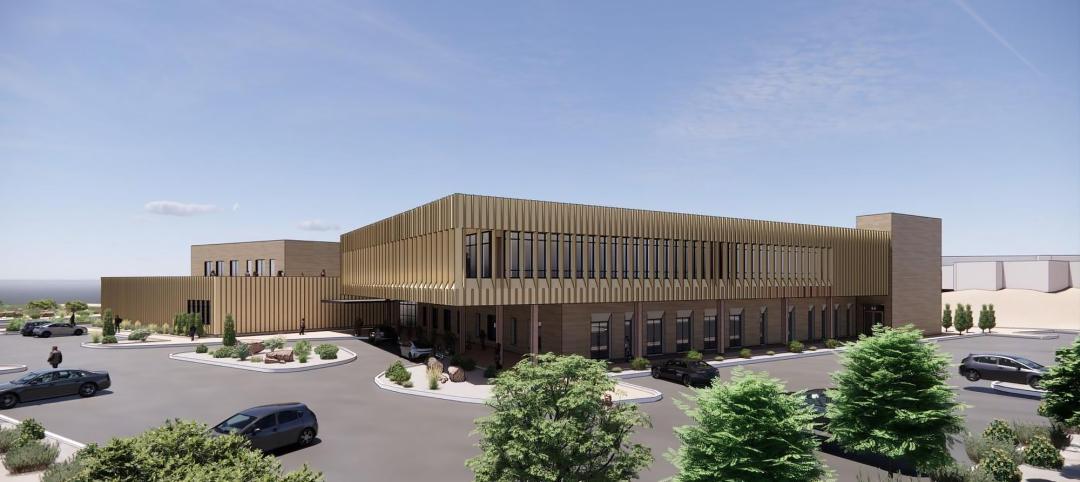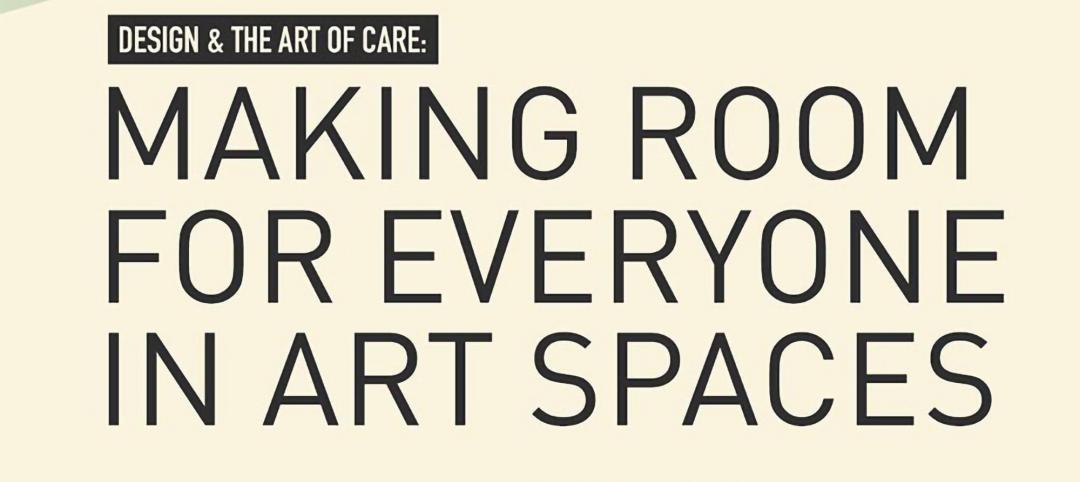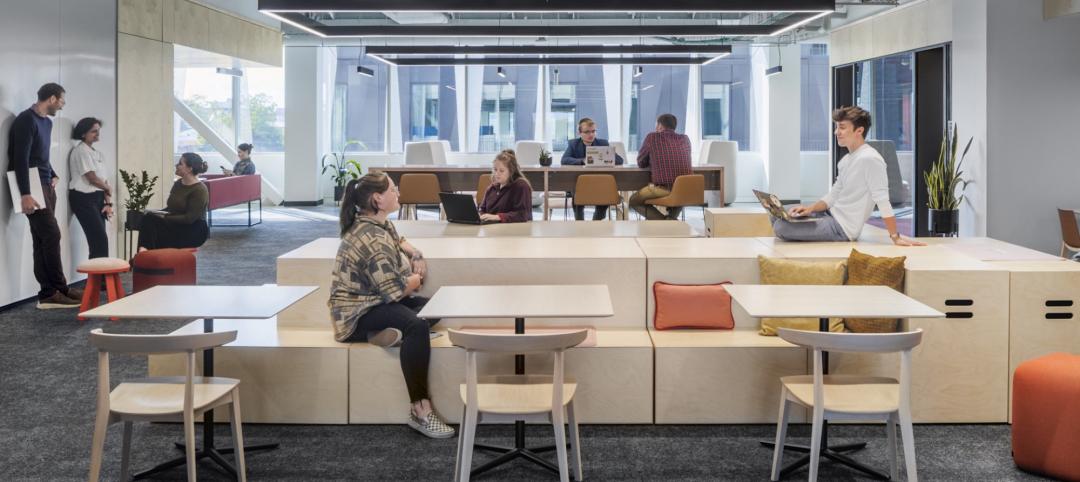Congratulations! Your organization has successfully pivoted to remote work and settled into a new routine. Now, it’s time to start preparing for your return to the office.
While no return dates have been set yet by governments and public health officials in our communities, it’s time to begin preparing for how we come back to the workplaces we all left behind in March. Like you, we want our employees to feel safe and supported, stay healthy, and remain productive. At GBBN, we’ve begun to design how we’ll come back together, and what immediate adjustments we need to make to our physical spaces. Here are some of our practical, tactical considerations for reuniting:
Choose an Approach, Make a Plan
Everyone is itching to return to normal, but it’s important to orchestrate who comes back when. Looking at roles and responsibilities can be a way to start organizing. There may be employees whose roles are suited to working remotely a while longer or employees who’ve experienced persistent technology obstacles may need to be part of the first wave of returns. Some employees will have health concerns or must contend with childcare. Understanding their needs while maintaining the good communication teams have established during this remote period is important. For us, balancing individual and business needs is our guide.
Cleaning
When it comes to day-to-day cleanliness, we’re taking a cue from our favorite gyms: Wipe down equipment or devices after use. Having adequate supplies to do this will be key. We’re looking at reducing the amount of shared equipment as much as possible, but in every workplace, there are unique spaces and pieces of equipment that must be shared. Signing up for timed slots for destinations within the office such as the print room, library, or cafe can allow for appropriate cleaning protocols between users. We also recognize that at the company level, we’ll need to look beyond trash collection and vacuuming to services that provide more disinfecting and deep cleaning to our offices more frequently.
Occupancy
We’re reviewing and reducing the capacities of our conference rooms and other common spaces. Conference rooms designed to accommodate 10 will be limited to 5 in the near term, for example. Physically taking out extra chairs visually cues people to stay within the new occupancy levels. If your workplace has a lot of private offices, consider leaving the door open until privacy is required to reduce touching handles to open and close doors.
Spacing
Bringing employees back into the office in phases means they can spread out and maintain appropriate distancing. It’s important to have an up-to-date floor plan of who is sitting where, so those coming back first aren’t all clustered on one floor or area. We recommend assigning spaces, rather than hoteling (where employees share open workstations). Consider temporary dividers between bench seating and remember to follow your company’s wipe-down policy if you must share workstations.
Office traffic
We’ve always loved the kind of “casual collisions” that can happen as we encounter each other on stairways and elevators. But in the near term we’re deliberately orchestrating how they will flow through spaces. Consider single way directional flows (one staircase for up traffic; a different one for down). It could also be helpful to provide everyone tips, tricks, and courtesies to extend each other: press elevator buttons with pen caps; if there are already two people on the elevator, wait for the next one, etc.
Lunch
In Beijing, our GBBN colleagues could return to the office before restaurants had reopened, so more of them started bringing lunch from home. We anticipate the same situation in our US office locations. We’re evaluating our common areas to ensure there is adequate space to maintain a comfortable distance from each other. Depending on the size of your organization, scheduled lunch shifts can alleviate people clustering around microwaves and dishwashers. First shift eats and wipes down surfaces before the second shift arrives, and so on.
Re-setting new habits
No sooner had employees gotten into the swing of #wfh, then it’s time to #wfw again. It will take time to re-acclimate to office life. Commuting, parking, choosing pants! We’ve all gotten out of the habit of these routines. Reuniting means having ready access to people again, which is wonderful but can also bring new disruptions.
In many cases, remote work has improved team communications. This is an opportunity to remain open to new ways of working, embrace what has been working well, and take stock of how this unplanned and unprecedented event might shape the future of your workplace.
Socializing
Everyone will need time to process and share their remote work experiences. We’ve been isolated from each other—employees who live alone may have spent this time completely isolated from other people. Productivity will rebound, as it did after pivoting to remote, but it’s important to understand that employees may have anxiety about being around others; you will need to facilitate settling in and safe ‘togethering’.
WFH, for like, ever
There will undoubtedly be employees who ask, “can’t I just keep working from home from now on?” Preparing an answer before you go back will be helpful, both as a short-term measure and a longer strategy. Are specific roles in your company better suited to remain remote or become largely remote? Setting expectations—and communicating them clearly—may prevent dealing with a flood of individual requests.
Speaking of communication
From detailing return to office timelines to assigning lunch shifts, clear communication will ensure a smooth re-entry, with everyone on the same page about what the guidelines are and what to expect. Designating one person for company-wide communications via email or zoom will keep everyone in the loop, keep the message consistent, provide a point person for questions, and pave the way for a smooth journey back.
As architects and designers, we don’t look for the solution, but the right solution to our clients’ challenges. If you’d like our insights on your organization’s specific return to office plans, we are happy to help. Reach out to our workplace expert, Chad Burke, at cburke@gbbn.com
More from Author
GBBN | Feb 26, 2024
GBBN's Inflation Reduction Act Calculator goes live
GBBN has publicly released its IRA Calculator, a tool that helps you understand funding opportunities in the IRA for sustainable design.
GBBN | Jan 25, 2024
Tactical issues for renovating university research buildings
Matthew Plecity, AIA, ASLA, Principal, GBBN, highlights the connection between the built environment and laboratory research, and weighs the benefits of renovation vs. new construction.
GBBN | Dec 14, 2023
What's next for affordable housing in 2024?
As 2023 draws to a close, GBBN’s Mary Jo Minerich and Amanda Markovic, AIA sat down to talk about the future. What’s next in terms of trends, technology, and construction of affordable housing?
GBBN | Oct 11, 2023
Leveraging land and light to enhance patient care
GBBN interior designer Kristin Greeley shares insights from the firm's latest project: a cancer center in Santa Fe, N.M.
GBBN | Aug 31, 2023
Small town takes over big box
GBBN associate Claire Shafer, AIA, breaks down the firm's recreational adaptive reuse project for a small Indiana town.
GBBN | Jun 20, 2023
Designing arts spaces that curate inclusivity
GBBN's Julia Clements and Marcene Kinney, AIA, LEED AP, talk tips for designing inclusive arts spaces.
GBBN | Mar 22, 2023
Onsite prefabrication for healthcare construction: It's more than a process, it's a partnership
Prefabrication can help project teams navigate an uncertain market. GBBN's Mickey LeRoy, AIA, ACHA, LEED AP, explains the difference between onsite and offsite prefabrication methods for healthcare construction projects.
GBBN | Mar 8, 2023
Is Zoom zapping your zip? Here are two strategies to help creative teams do their best work
Collaborating virtually requires a person to filter out the periphery of their field of vision and focus on the glow of the screen. Zoom fatigue is a well-documented result of our over-reliance on one method of communication to work. We need time for focus work but working in isolation limits creative outcomes and innovations that come from in-person collaboration, write GBBN's Eric Puryear, AIA, and Mandy Woltjer.
GBBN | Jan 12, 2023
Invest in existing buildings for your university
According to Nick Sillies of GBBN, students are increasingly asking: "How sustainable is your institution?" Reusing existing buildings may help answer that.
GBBN | Dec 5, 2022
How to foster collaboration and inspiration for a workplace culture that does not exist (yet)
A building might not be able to “hack” innovation, but it can create the right conditions to foster connection and innovation, write GBBN's Chad Burke and Zachary Zettler.
















